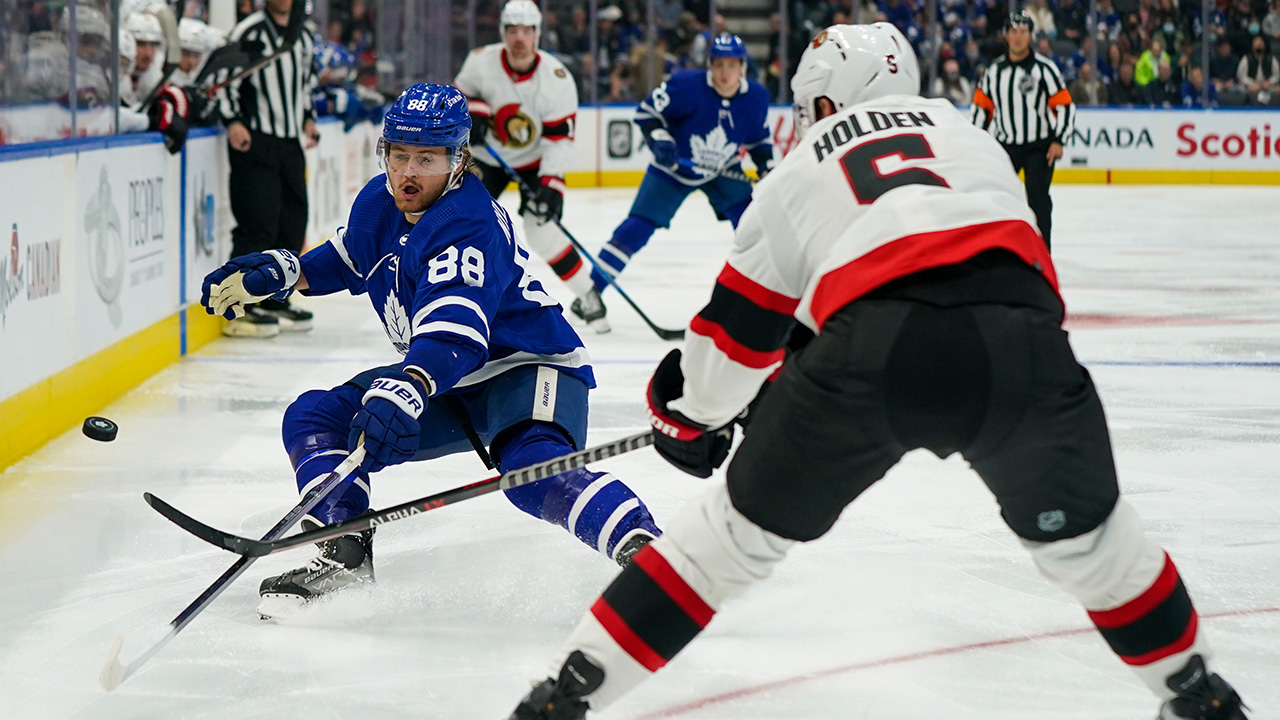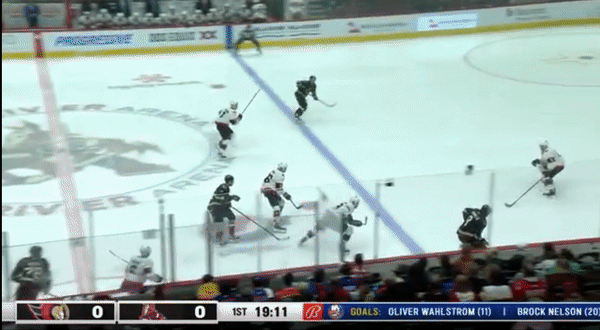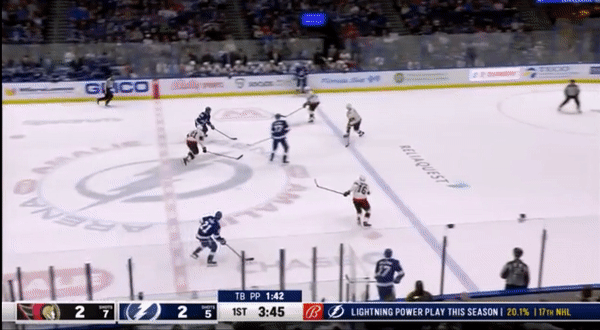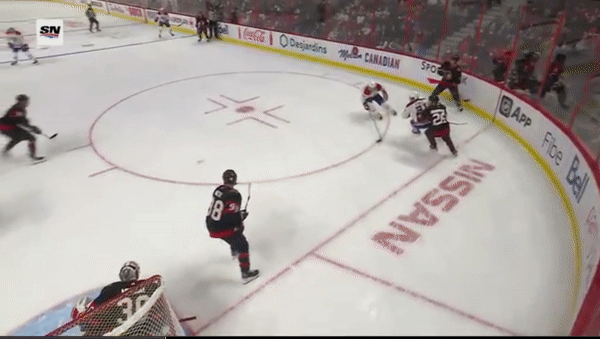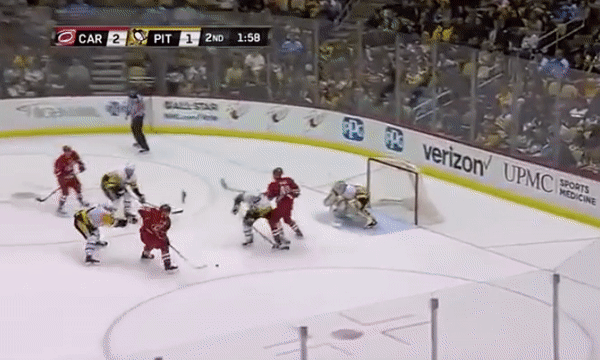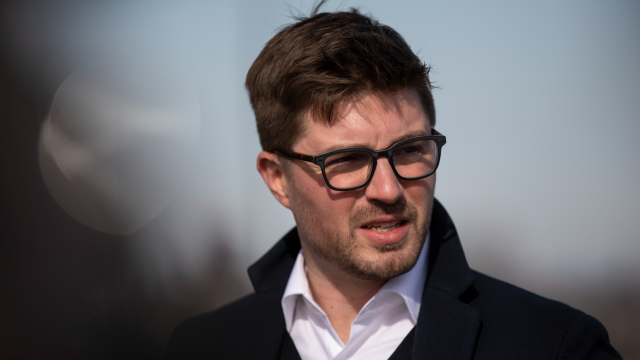Back before the doubts, the dips in form, the questions of whether he can ever again be what he once was, Matt Murray was a phenomenon.
Before he set foot in the big leagues, he rewrote history in the minors, setting the record for the longest shutout streak in AHL history (an absurd 304 minutes and 11 seconds) during his first campaign as a pro. By the end of that 2014-15 season, he’d put up 12 shutouts on the year, the most ever collected by an AHL rookie, the second-most ever amassed by anyone in that league.
By the end of the next season, he already had a Stanley Cup ring — not won as a lucky first-year passenger, but hard-earned, the 21-year-old unexpectedly starting 21 of 24 playoff games as Sidney Crosby and Co. climbed the 2016 mountain. The year after that? He took over Pittsburgh's regular-season starting duties for real, and capped off what was technically his true rookie year by riding a sterling .937 save percentage through the playoffs to win his second Stanley Cup in as many attempts.
Mike Buckley had a front-row seat to that meteoric rise. The goaltending coach worked alongside Murray during the netminder’s junior days in Sault Ste. Marie, then in the AHL with the Wilkes-Barre/Scranton Penguins, and finally with the big club for those two title runs.
From the beginning, he says, Murray's talent was clear.
“Right off the bat, you could tell he was very mature,” Buckley remembers. “He had a style of play that, you could tell right away he was going to transition to professional hockey fairly easily. Just because he could read the game very well.”
When Murray’s at his best — whether back then, or even still — it’s that innate understanding of the game that rises to the top.
“I think it's mainly his anticipation, his ability to just stay calm under pressure — no matter what the situation was, he would maintain that level of calmness,” the coach says. “You have certain types of situations as a goaltender. You have moments where you need to just be calm and keep it simple and have a really basic save. You have saves that require a little bit more urgency, maybe an odd-man rush, a two-on-one where you've got to get across the crease. Then you have this flat-out desperation, where you are just competing and battling.
“And if you look at Matt in all three of those situations, he looks exactly the same. He looks very calm. Maybe his body's moving at a totally different speed, but you can just see the clarity in his mindset.”
During those early years, as Murray was trying to balance adjusting to the NHL with seemingly taking it over, Buckley’s focus with the young goaltender was as much on solidifying that mindset as it was polishing up his mechanics.
“We spent a lot more time working on the mental game and just mindset performance,” the coach says. “It wasn't so much trying to take the way he was playing and drastically change it, just really taking baby steps. … A big thing that we always had with each other was ‘Love over fear.’ Choose love. Just loving the game, loving getting out there, loving the hard moments — loving the pressure, as opposed to fearing it.
“And especially the first Cup run, he really, really embraced that motto. It's one that we would say to each other all the time, ‘Love over fear.’ I think that had a big impact on his game.”
There were, of course, aspects of Murray’s play that required fine-tuning, even as he racked up shutouts and drove up his save percentage. Still, shifting his approach to those details also seemed to come back to mindset.
“I think, in Pittsburgh, where he had some struggles is where he would start to play deep in net and he'd be very conservative in net. … He would generally start off each season playing a little bit deeper — I think he always kind of had the mindset that he needed to conserve his energy so he could play a lot of games,” Buckley says. “Where he had more success was when he was a little more aggressive, not just in his conditioning but just his mindset. And, also, same thing with practice — just put in the hard work in practice, don't conserve anything.”
Where the story went after that dreamlike early chapter in Pittsburgh is well-documented. As quickly as he rose, the young netminder came back to Earth, the numbers dipping, the starting role beginning to fall to Tristan Jarry. Half a decade after he'd burst onto the scene in Cup-clinching glory, Murray was headed for a reset in Ottawa.
But having watched it all play out firsthand from behind the scenes, Buckley says it was more complicated than it might've seemed from afar, few understanding just how much pressure was on Murray's shoulders during those early years, and the toll it took.
“When you look at the success he had at such a young age, it's unprecedented. No goaltender in the NHL has ever done that — two Stanley Cups as a rookie. No one's ever accomplished that. But no one's ever faced that level of pressure, so there's no handbook on that — you know, there's no one that you can talk to and say, 'Hey, you've done this before. How do you handle it?'” Buckley says. “He was the first. And not to say that he wasn't ready for that enormous level of expectation, but when you're playing on a team that is — let's be honest, Pittsburgh at that time was a very offensive team, that's going to have breakdowns. And when they do, they're going to be significant. And you've got to come up with a huge save.
“And if you didn't come up with that huge save at the right time, on a consistent basis, then you become the guy that gets kind of pointed at in the media. And I believe that's exactly what happened with Matt. … I think for someone who had that much expectation on him at such a young age, that pressure at times got to him.”
That his move in 2020-21 was to a young, rebuilding Senators team didn’t necessarily help.
“Coming out of Pittsburgh on a low note and going to a situation where Ottawa was a younger team, not a very forgiving defensive structure in front of him, and multiple injuries — that's hard to get a good footing for a goalie,” Buckley says. “If you talk about one of the hardest scenarios to go into when trying to come out of an already tough predicament, you know, that would be a tough one.”
The dropoff in Murray's play over the past two seasons seems to be about more than just a talented goaltender suffering the defensive mistakes of a porous blue line, though, according to goalie coach Rob Gherson — a former Washington Capitals draft pick who spent a half-decade as a pro in the AHL, ECHL and UHL.
“He does a lot of things probably better now than he did when he was a rookie,” Gherson says of Murray, having pored over tape of the former Penguin and Senator recently. “You can see when he's in his stance, he's a little bit bigger, his chest is up higher, he has a little more knee-bend in his stance. Theoretically, that should make him a better goalie — he's filling more net, he's in a more athletic position. … But I think the biggest thing, watching clips from last year, is he's really questioning himself as he makes saves.”
Gherson pulled a few clips from the end of Murray's run in Ottawa to illustrate his point. Take these plays from the 27-year-old’s most recent NHL games, late in the Senators' 2021-22 campaign:
“He makes a good save here, but he's really squeezing his knees together, trying to find the puck,” Gherson says of the above sequence against the Coyotes, from Murray’s final game as a Senator. “He doesn't know where the puck is. For most goalies, that's an issue of you thinking you have to do everything.”
“Here, that's a huge, big, exaggerated poke-check,” he says of the above play against the Lightning. “And again, he's trying to find the puck, he's looking down, he doesn't really know where the puck is.”
“When a goalie's really confident in their ability, they're going to maybe get toes to the top of the crease. But when you're fighting the puck, when you think you have to do everything, you charge out and come flying out and just try to be big and block the puck,” he says, pointing to the above breakdown against the Canadiens. “That shows me that he didn't really have a lot of confidence last year in himself, or in the team. I'm not sure what it was, but it manifests in trying to do too much, and then letting in goals that you probably should stop because you're trying to do too much.”
On the other hand, rewind to the early Pittsburgh years, when Murray was at his best, and you see a more focused approach.
“In 2016, you can see him in these situations — Pittsburgh gave up good chances too, it wasn't like it was always easy — but it's so controlled,” the coach says of the above sequence from Murray's first Cup year. “He's not panicking or doing any extra movements. He just beats the pass, he follows the rebound, and he's on it.”
For those who’ve never played the position, it’s difficult to understand just how much the performance of the blue line in front of a netminder can impact their own success, Gherson says. It’s more than simply the barrage of higher-danger scoring chances to deal with. There’s also, like Buckley described, the mental aspect of the position, which can shift significantly if you lose trust in your defenders.
“What happens when you're playing on a team that's giving up a lot of shots or a lot of scoring chances every night, and losing, or even on a team that just doesn't score a lot, you feel like you have to be perfect,” Gherson explains. “You feel like you have to start doing other guys’ jobs — instead of just focusing on the shooter on a two-on-one, you're worried about the pass. And then when you're worried about the pass, you start drifting towards the middle of the net instead of staying on an angle, and you start letting in goals that are your fault. … When it starts going the wrong way, it can be hard to fix it.
“When you start letting goals in that are your fault because you're trying to do your defenceman's job, that starts weighing on you. And you start trying to do [even more]. And that's when you lose confidence.”
Rocky as it might've been, the slate's now been wiped clean for Murray, the veteran landing in Toronto via trade in July after a disappointing two-year run in Ottawa.
And while the reviews for GM Kyle Dubas’s swing at replacing former starter Jack Campbell have been mixed, there's reason to believe the performance of the unit in front of Murray will better equip him to show his best with his new club.
“In a general sense, I would say the Leafs play pretty similar to the good Pittsburgh teams that he was on around 2016, 2017,” says tactics expert Jack Han, who served as an analyst for the Maple Leafs for two seasons, and as an assistant coach for the AHL’s Toronto Marlies in 2019-20. “There are some differences in terms of the defensive structure and the details of how plays are defended, but overall, whether it's the Leafs now or Pittsburgh a few years ago, these are both teams that like to have the puck, that defend mostly by having the puck and being up ice.”
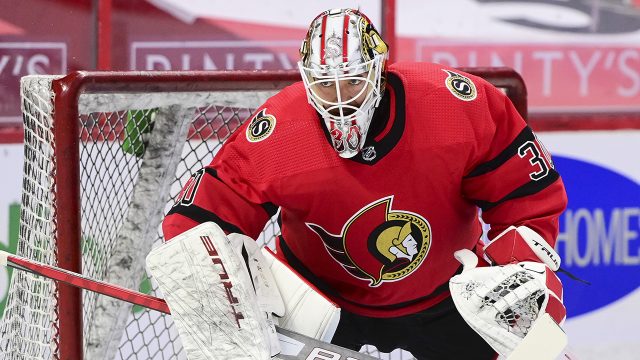
Though the complexion of their offence might lead some to assume the Maple Leafs are a run-and-gun squad, they're far from a team that regularly hangs their goaltenders out to dry in the name of scoring chances, says Han.
“I think Toronto now, they're a pretty good team defensively, from a personnel and from a structure point of view. I think it's a little bit overrated how much they give up. Certainly any time that you play with the puck, there's a chance that you turn it over at the blue line and it goes back the other way. That's the price of doing business if you want to play with the puck,” he says. “I don't see Toronto as especially vulnerable. As a matter of fact, I think, for the most part, they do a good job of helping their goalie. … You know, they're not as good as Colorado, but they're not that far off, for a team that plays with the puck and plays more of a possession style.”
That should be a positive for Murray, Gherson says, in terms of reining in any tendency to try to do too much in the cage.
“They've been a pretty good environment for the last few years defensively, where they're not giving a ton of scoring chances up. And when you're not facing a ton of scoring chances as a goalie, you can be confident that all you’ve got to do is your job. You don't have to do everybody’s job.”
For Buckley, who’s seen Murray at his best, and who knows him better than most, the key to the two-time champ finding success in Toronto will be about more than the team in front of him, though. It’s also a matter of going full-throttle from the very beginning of his run in a Maple Leafs sweater, of moving past that old desire to hold back.
“You know, few and far between are the goalies that are going to play the workload that they used to play — 70 games, 65 games. It's become much more of a two-man workload, and I think that's going to be a huge part of him having success in Toronto. If he can accept that, that's where he's going to be at his best.” Buckley says. “And then, in the time that he has to be able to work, work hard and play his game the right way, without trying to conserve anything.”
As for the other questions, of the pressure and the spotlight and the burden of being relied upon to lead his club through another high-stakes playoff run, Buckley’s seen Murray weather that storm before. He's watched that pressure roll off his back, and he's watched it weigh heavy upon him.
The question moving forward will be whether learning from the latter allows Murray to experience the former once again.
“He has the experience of dealing with that pressure, having won those two Cups. I know it's a different market in Toronto, but the Pittsburgh media is extremely hard on goaltending. … And he's dealt with that,” Buckley says. “I think as he's gotten older, he's learned not to allow the media and all that noise to affect him as much. So I think he's well-built to deal with any of that type of distraction.
“For him, it's just going to be playing his game. And what's gotten him all the success that he's had is being in control. Being in command of his game, being aggressive when he can be aggressive, and utilizing his play-reading skills. ... I think when he's at his best, he's rising above that pressure."
